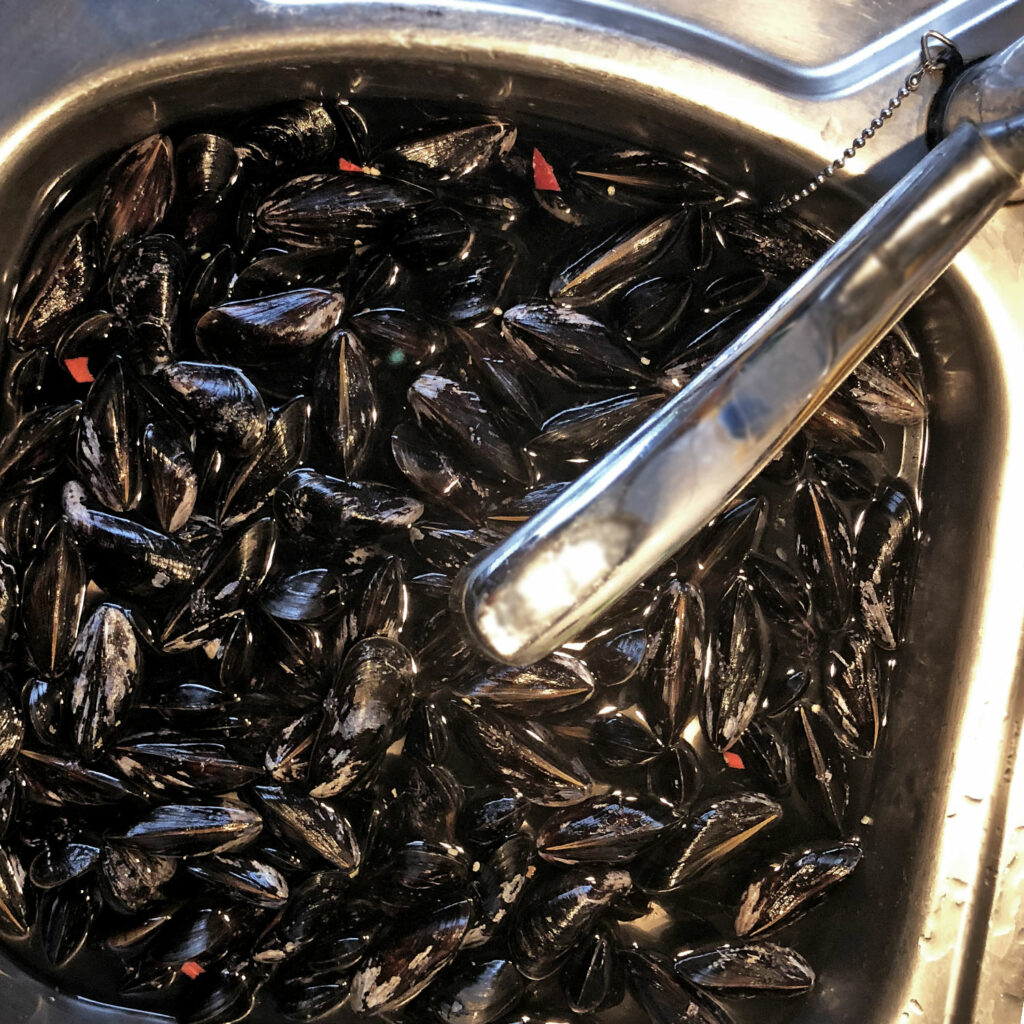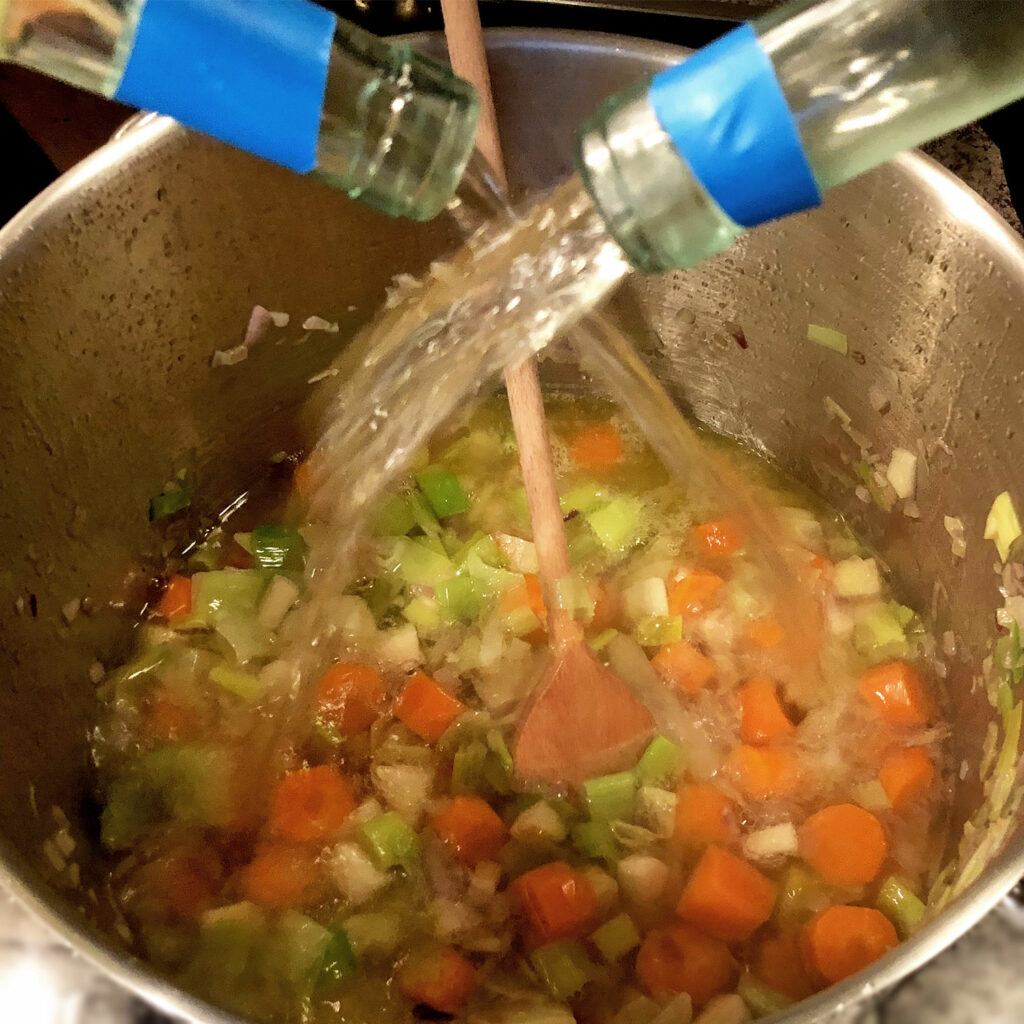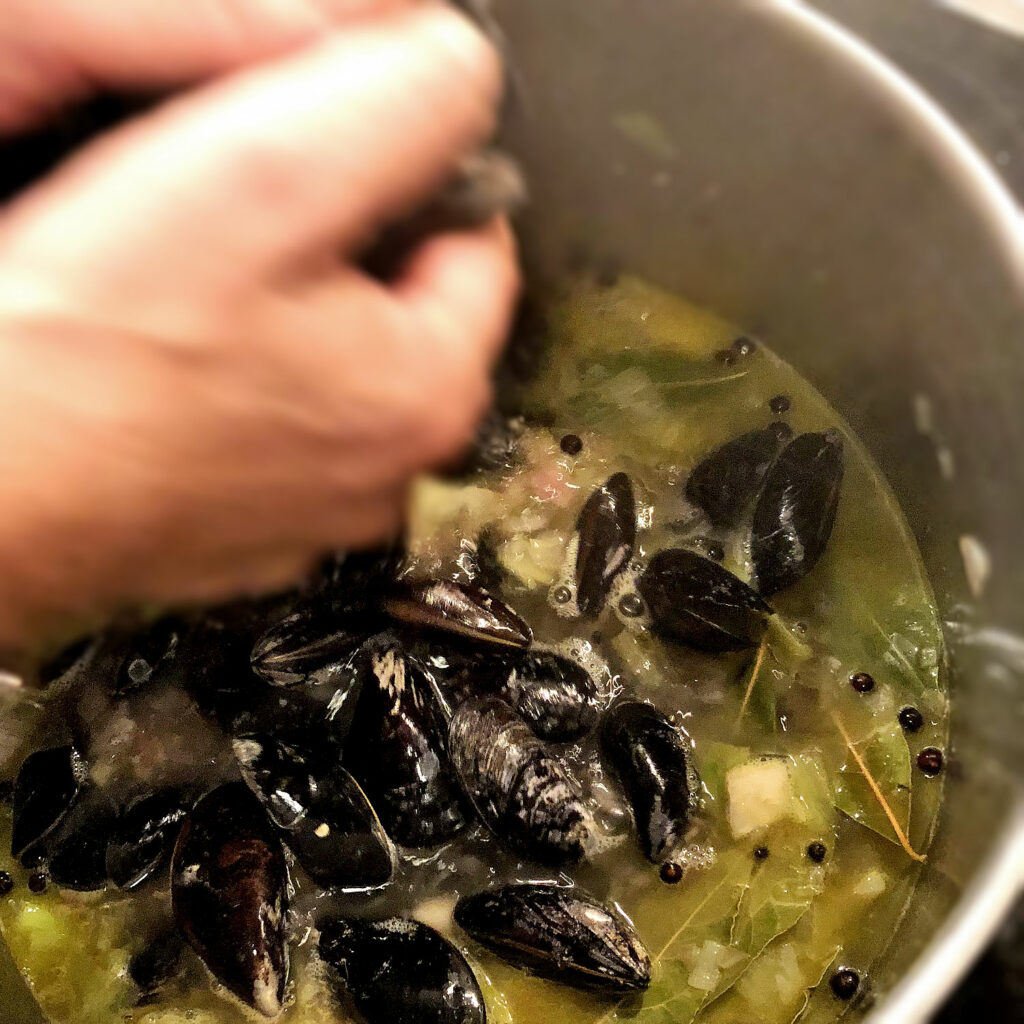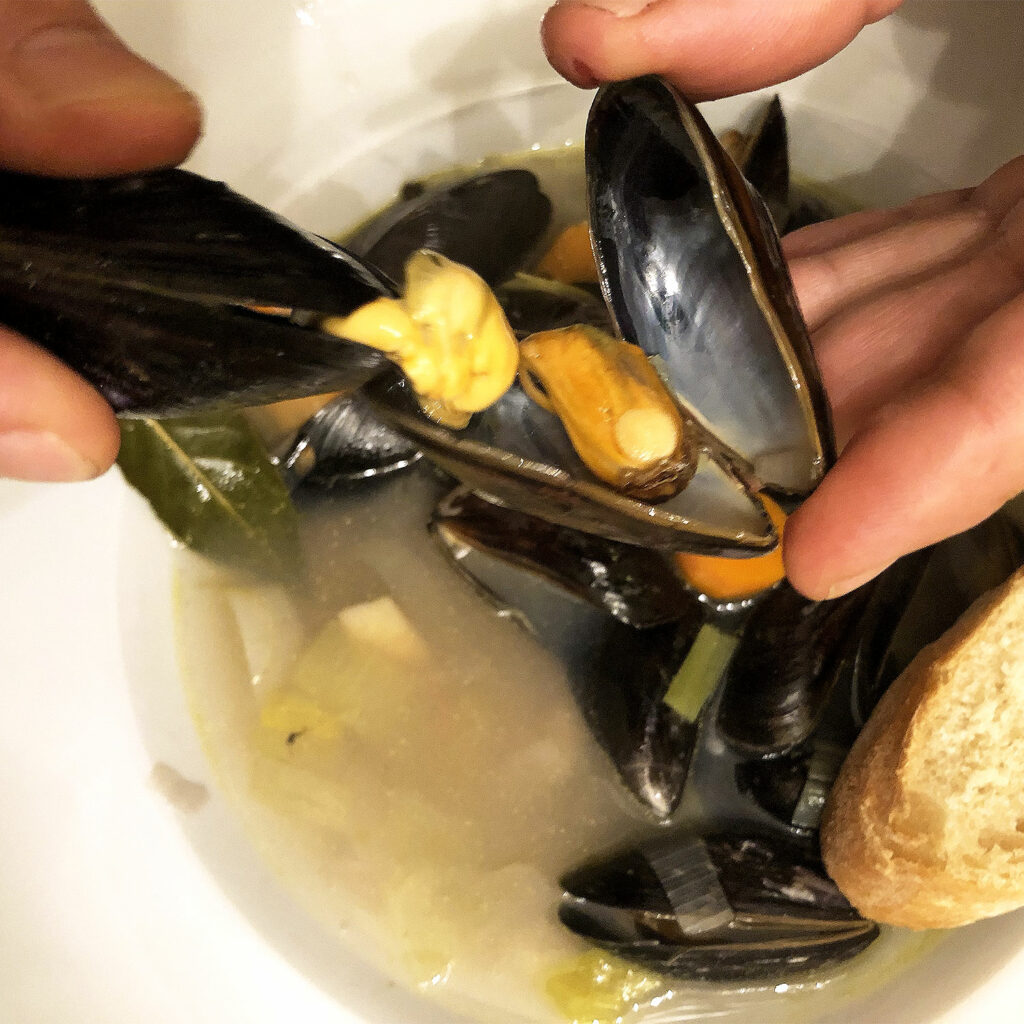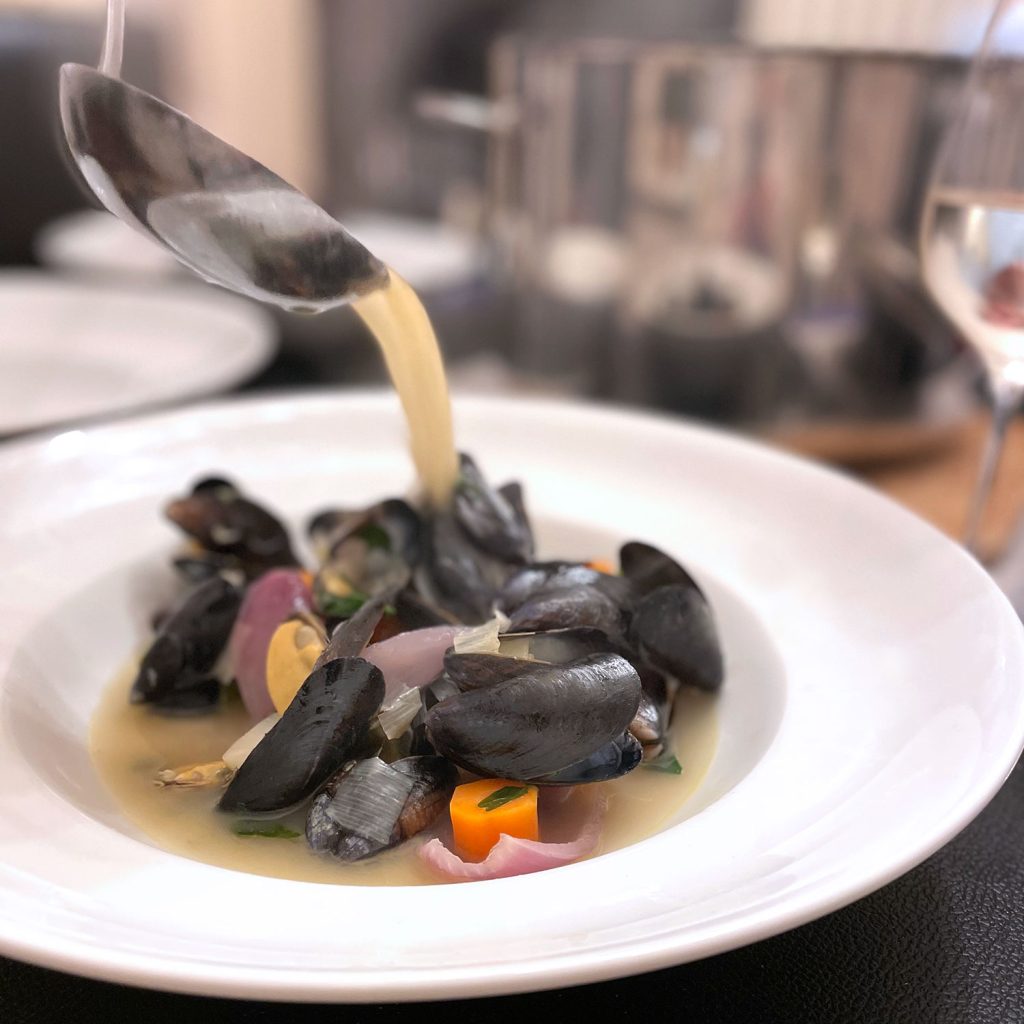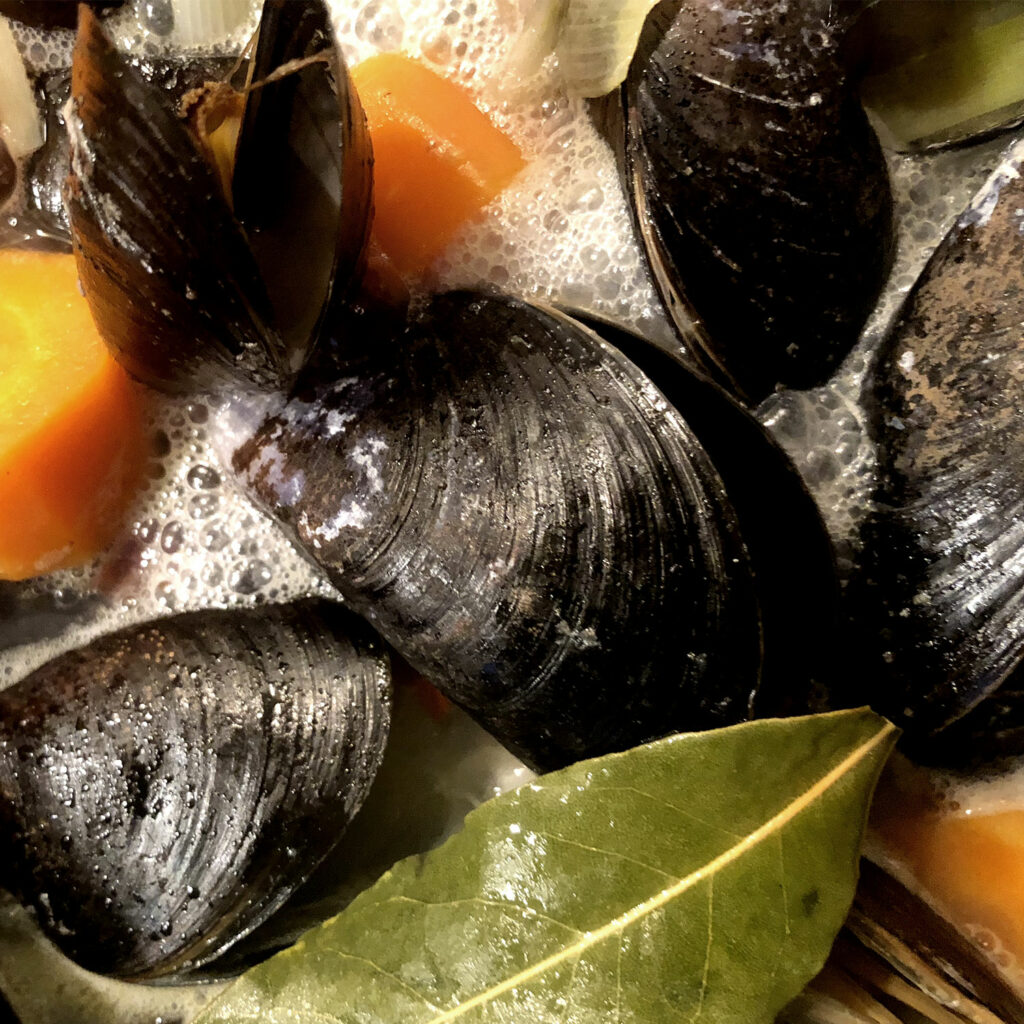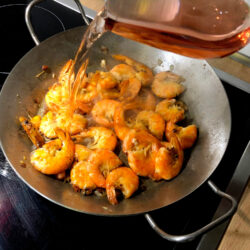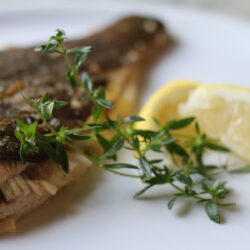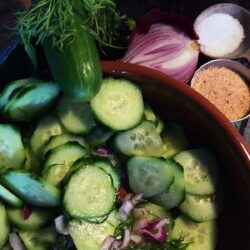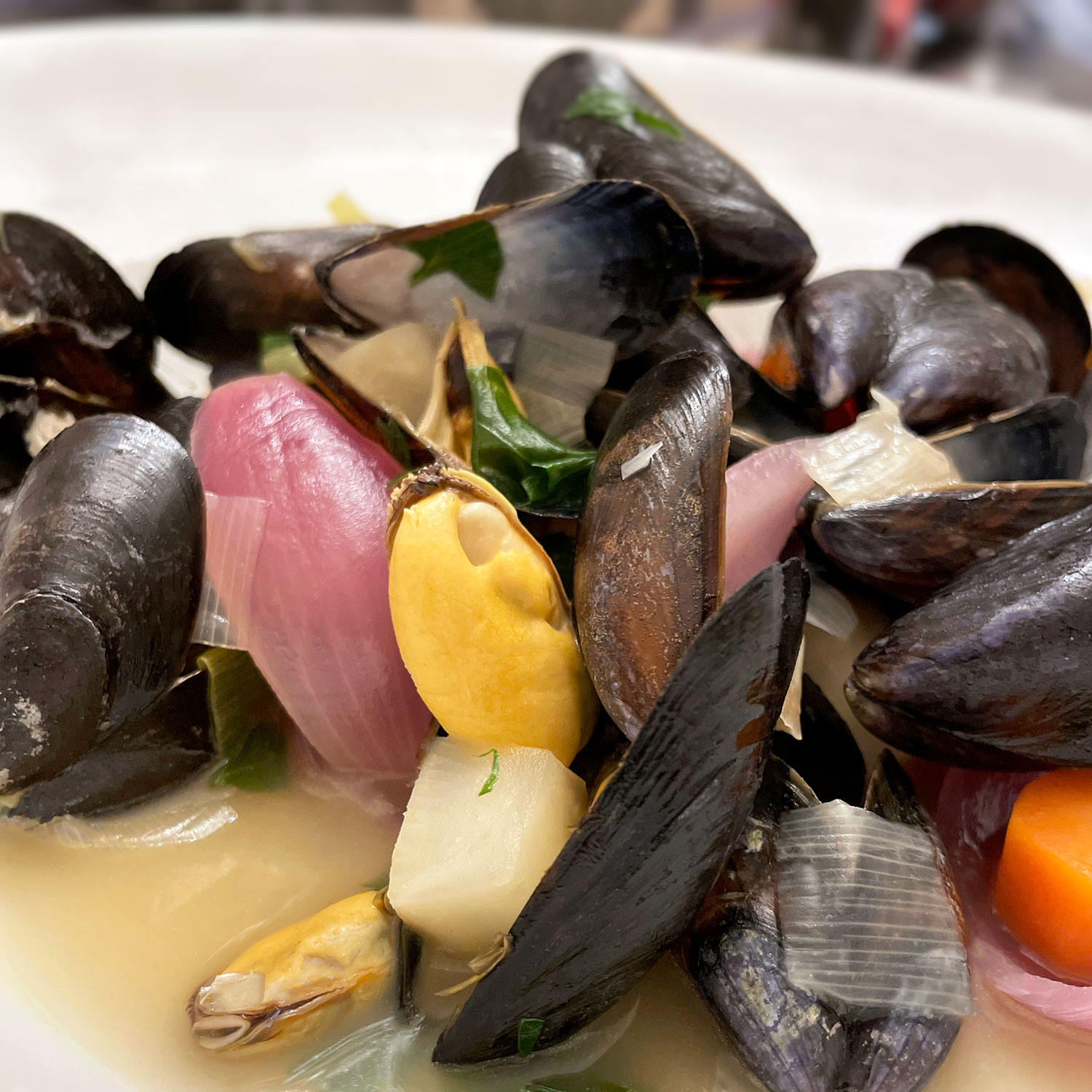
Blue mussels
Vacation by the sea.
Shell season. Delightful. That’s when I like to sit in one of the many fish restaurants in Hamburg’s Portuguese Quarter and eat Blue mussels. Heaps of them …
Especially when the blue mussels are fresh from the Northern Sea, from the mussel beds in front of the island of Sylt, they taste simply fantastic.
Isn’t the feeling of eating them just great? Reach into the bowl with your fingers, fish out one mussel at a time from the white wine broth, use an empty mussel shell as “tongs”, use it to scoop out the mussel meat and ‘put it in’ . Then dip the white bread into the broth. I don’t even have to go to St. Peter-Ording or Westerland: The vacation by the sea starts immediately – as a Cinema in mind.
Greasy fingers and blissful delight – finger food at its best.
Eating blue mussels is one thing.
Prepare blue mussels yourself the other.
You may be worried about whether you can do it on your own? Or whether the mussels are really fresh?
Or, or, or …
However, it is actually all quite simple.
Preparation time
1 hour
Cooking time
15 minutes
Servings
for 2 persons
Kitchen know-it-all
Blue Mussels - What's their attitude?
They are not in a bad mood (german: ”mies”) either.
The Medieval high-German word for moss was “Mies”. The name mussel therefore means moss mussel.
Here in the north, the island of Sylt blue mussels are particularly popular.
Ingredients
- ½ garlic bulb (fresh)
- 2 onions
- 2 leeks
- 200 g carrots
- 200 g celeriac
- ½ bunch parsley
- 700 ml white wine (dry)
- 2 kg blue mussels (fresh from the fishmonger)
- 2 tablespoons olive oil (extra virgin)
- 1 tablespoon butter
- 4 bay leaves
- 1 tablespoon juniper berries
- 1 tablespoon pepper (grains)
- 1 tsp salt
Goes well with …
… with a baguette or a ciabatta.
Have a dry Riesling or Pinot Gris with it.
However, a rosé (e.g. Syrah) is also a fantastic match.
Of course, all well cooled.
Tip
The good old wine rule: “What you drink, you cook with” sounds plausible, but it’s nonsense.
I don’t know how many liters of the best wine I have courageously tipped into soups, sauces & Co. And weep a tear for every drop.
Drink their good stuff!
And don’t overcook it. Of course, it is important and right to use a decent quality as a cooking wine. It is an ingredient and deserves as much attention as any other. But you don’t have to overdo it either.
Preparation
Prepare blue mussels
- Soak mussels in cold, standing water for about 20 minutes.
- Important: Contrary to popular belief, you do not have to immediately sort out and throw away opened or damaged specimens.
- Therefore, be sure to give the mussels the 20 minutes to acclimate. Healthy mussels quickly close their shells again. You can now sort out the mussels that have not done so.
- Tip: Add a chopped chili pepper to the water, this will encourage the mussels to flush out.
- Clean mussels: Remove the so-called “beard” (these are the hard threads on the side of the mussel), by pulling it off vigorously.
- Important: Contrary to popular belief, you do not have to immediately sort out and throw away opened or damaged specimens.
- Brush shells again with a brush under running water, removing any stubborn sand residue or calcium deposits.
Prepare vegetables
- Cut garlic bulb in half.
- Peel the onions and cut them in half.
- Clean leeks, cut in half lengthwise and wash thoroughly.
- Peel the carrots and celery.
- Cut onions, leeks, carrots and celery into coarse strips.
- Clean and chop the parsley.
Brew
- Heat oil and butter in large pot.
- Cook garlic and onions over medium heat for 2 min. stew.
- Add leeks, carrots, celery and cook for 5 min. continue steaming.
- Deglaze with white wine.
- Add salt and peppercorns to taste.
- Add bay leaves and juniper berries.
- Bring the broth to a boil.
Cook mussels
- Add blue mussels to the boiling broth.
- Reduce heat.
- Covered 15 min. cook.
- Gently shake the pot from time to time. (This way you keep creating some space and the shells can open evenly).
- At the end, add the parsley (let it cook briefly).
